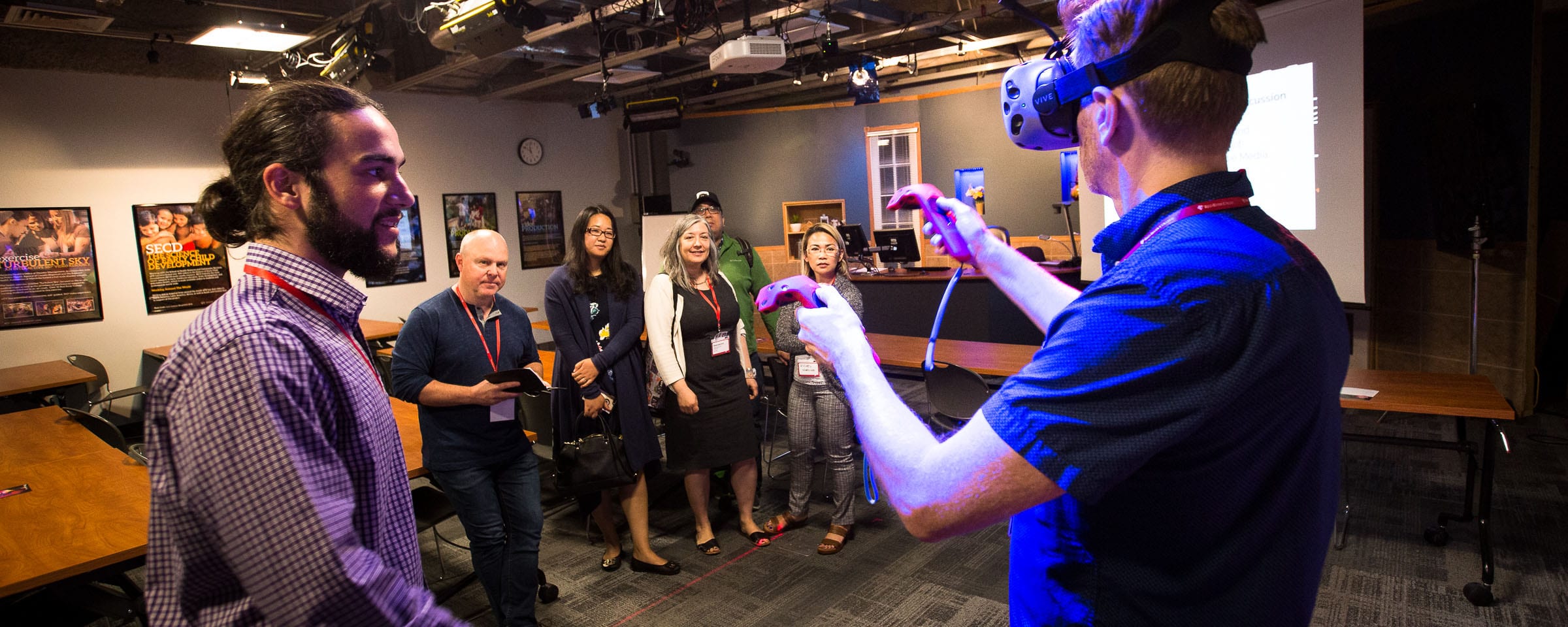Building community in your online or blended class
One of the important activities instructors perform is to build a learning community in their classrooms. A learning community defined as a group of individuals who are interested in a common topic or area and who engage in knowledge-related transactions as well as transformations within it. (1)
Some of the benefits accruing to all participants include keeping students engaged and focused, promoting collaborative learning and academic motivation. In a face-to-face class environment this comes naturally through class discussions, group work, group assignments, and even grabbing a coffee after class with your fellow students.
The question is – How do you build community in an online or blended class?
You will need to foster these elements of community:
1) A sense of shared purpose
2) Establishment of boundaries defining who is a member and who is not
3) Establishment and enforcement of rules/policies regarding community behavior
4) Interaction among members, and
5) A level of trust, respect and support among community members(2)
Here are few examples of how you can begin to build community in online and blended classes. The examples that follow will give you some idea of the tools you can use to achieve your desired result. Keep in mind that whatever tools you use as an instructor to build community in your class you will need to be purposeful in your planning.
- Where possible, build in assignments that involve a community engagement. For example, for an app development course, students can work with a non-profit organization (this would be identified by the instructor and the details of the collaboration would be identified upfront) to develop an app.
- Build in collaborative learning activities and assignments. For instance, rather than having students write an essay or reflective paper on a particular topic, have them create a blog that will be shared with other students in the class. This provides an opportunity for students to engage with each other by sharing their perspectives and discussing/debating divergent viewpoints on the issue at hand. The same technique could be used with videos or photos, not just text-based media.
- Build in opportunities for risk taking. A common goal/enemy/challenge that includes some stress but also shared support can help build community as well. The risk is the potential to ‘fail’ or miss the point or succeed beyond one’s expectations. It’s not a group assignment per se but a shorter activity.
- Make yourself available. Communicate clearly to the learners how and when you are available. Hold virtual office hours. Reply promptly to student messages. Moderate and participate in the discussion forum. Check on each of your student’s progress routinely. Be actively involved. Share about you in a down-to-earth professional biography and share your goals for the students in the course.
- Use learning contracts. Essentially, students complete these after reviewing the course outline. This is a way for the teacher and students to identify goals and expectations for the course. The teacher can clarify any questions upfront and understand what the student hopes to accomplish. This can be revisited halfway through the course and at the end of the course. Contact the TLTC for a ready-made fillable PDF example currently being used in an online course.
- At the start of a new course, have students pair up, interview each other, summarize their findings, and introduce their partner to the class. This same icebreaker can be facilitated online using the tools available in the learning management system (at RRC, this is called LEARN). This can be done by pairing students in an online discussion forum and using it to conduct the interview. Alternatively, students can pair up and use texting to conduct the interview. They can then post the summary to the discussion forum. Other students can in turn reply to these posts.
- At the beginning of the course, have students share about themselves on the discussion forum. Have them share about why they are taking the course, their goals for the course, and about any questions they have about the course.
- Create opportunities for group work. Provide the opportunities for the students to use tools such as LiVE (RRC’s virtual classroom environment) to collaborate on group projects. Encourage peer-review either as part of formative assessment or as part of formal evaluation. Pair students up with ‘study buddies’ in the course and ask the students to identify technology buddies who might be tech-savvy family or friends.
- Use Think-Pair-Share in which students first work individually to solve a question then in pairs then with the class. This works beautifully in any classroom – virtual or real.
- One final strategy commonly employed in the online environment is to use tools such as a discussion forum to allow students to post questions about the course that may be answered by the instructor or other students. Chances are that more than one student has the same question. This allows you to save valuable time while enabling students to see that they are not alone.
Remember in whatever community-building activity you plan in your course you as the instructor must model the community behavior that you expect from your students.
(1)University of Texas https://ows.edb.utexas.edu/site/computer-supported-collaborative-learning-2011/2-definition-learning-community
(2)Vesely, P., Bloom, L. & Sherlock,J. (2007). Key Elements of Building Online Community: Comparing Faculty and Student Perceptions. Journal of Online Learning and Teaching, 3, (3). Retrieved from http://jolt.merlot.org/vol3no3/vesely.htm
